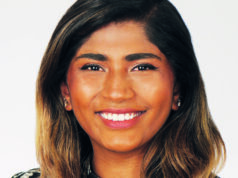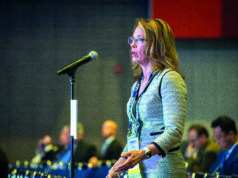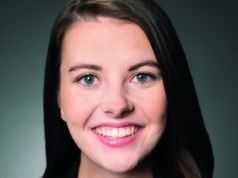
As my third year of residency comes to a close, that little thing called The Match feels like a distant fever dream. The memories of Electronic Residency Application Service (ERAS) application anxiety now tinted with the rose-colored glasses of a surgical resident entering her much-needed research years.
Every summer, however, the residency application process starts anew. Like many colleagues, matching into residency was filled with some staggering highs and notable lows. So, for the vascular surgery residents of tomorrow, I encourage you to shoot your shot!
Find your footing and your mentors
As someone batting less than 500 on the day of United States Medical Licensing Examination (USMLE) Step 1, the weak points in my application were well defined. Even with solid clinical grades and an extensive advocacy background, the climb to surgical residency felt like tackling Mount Everest. Thankfully, honest feedback from thoughtful mentors provided invaluable guidance—focused on centering my lived experience. My work as a primary care scribe, data analyst, and advocacy fellow in Washington, DC meaningfully informed my answer to “why medicine” and “why vascular surgery.” As a non-traditional medical student, creating a framework to highlight my unique strengths was crucial for success on the interview trail. And if we’re being honest, my Step 2 CK (clinical knowledge) score improved massively—thanks in large part to dedicated work around test anxiety.
Survive and thrive on the interview trail
The cost of applying to more than 40 programs was dulled by the thrilling prospect of color-coded Excel spreadsheets and enabling email alerts for interview invites. Before the spreadsheets, however, came honest reflection about my priorities in surgical training—mainly the importance of living in an urban environment, exposure to vascular trauma and complex aortic work, and access to dedicated research years. On the interview trail, I clearly communicated how my priorities as a future vascular surgeon-in-training aligned with my programs of interest. After each interview, I took time to digest the experience and updated my rank list in real-time. While momentarily tedious, this practice saved hours, if not days of deliberation in the weeks leading up to rank list certification. Last but certainly not least, I militantly tackled my post-interview follow-up emails—for which my future self is grateful.
Trust the process
Trusting the process is always easier in retrospect. Even during my Halloween COVID-19 wedding in 2020—amidst the first round of interview invites—real uncertainty about my future was front of mind. Looking back, the process of organizing an application, completing interviews and honest self-reflection was just good practice for surgical training. You must trust the knowledge, confidence and purpose you have cultivated. The Match is simply about finding a training program that challenges you to be the best person and vascular surgeon you can be. It should come as no surprise—this looks different for every applicant. Nevertheless, I promise your first open abdominal aortic aneurysm repair, tibial bypass or trauma thoracic endovascular aortic repair (TEVAR) is truly just a blink away.
Blake Murphy, MD, is a an integrated vascular surgery resident at the University of Washington in Seattle.












